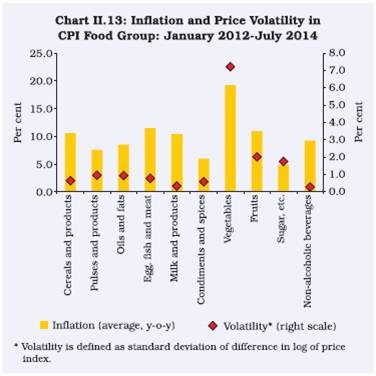An empirical analysis of pricing Dutch reverse convertible bonds
Post on: 10 Апрель, 2015 No Comment

Marta Szymanowska†, Jenke ter Horst‡, and Chris Veld‡‡
December, 2003
PLEASE DO NOT CITE OR QUOTE WITHOUT THE PERMISSION OF
THE AUTHORS
JEL classification: G10 and G19
Keywords: alternative investments, reverse convertible bonds, option
pricing, behavioral finance, framing
Abstract
The question regarding the deviation of the values of assets from their
fundamental levels has gained a lot of interest in the financial literature.
The recent increase in the global demand for derivatives has shifted the
attention from common stocks to derivatives. We focus on one type of
derivatives, namely reverse convertible bonds. These are bonds that give
right to a high coupon rate and at maturity the issuer has an option to either
redeem the bond at par in cash, or to deliver a pre-specified number of
Introduction
The question concerning the deviation from rational values of assets has
gained a lot of interest in the financial literature. Episodes of significant
overvaluation in the Treasury bond market were documented in e.g Cornell
and Shapiro (1989); Jordan and Jordan (1996). They found significant
overpricing over a certain period and potential arbitrage opportunities that
could not be attributed to changes in fundamentals.
Recently, the global equity derivatives market has become popular and is
growing rapidly. According to the Bank of International Settlements its
volume of trade has expanded by 52% in the period from June 1998 till June
2001. Among the derivatives, the convertible instruments have reached
their global issuance peak in 2001. This was driven by strong demand from
private customers as well as from hedge funds and corporations (Green,
2002). As a consequence of such a shift in the interests of investors, the
market was flooded with a large number of novelty derivative products.
With time plain vanilla products became less popular as investors were
demanding more sophisticated capital protections, and the derivative
products started to include barrier clauses reducing downside risk.
In this context reverse convertible bonds became very popular, especially in
countries such as Japan, UK, France, Italy, Germany and the Netherlands.
A reverse convertible bond (RC) is a bond that can be exchanged into shares
of common stock at the option of the issuer. In fact, it is a bond in
combination with a written put option. In order to compensate investors for
the possible loss due to written put option, the bonds carry very high coupon
rates. These rates vary according to the conversion conditions and to the
nature of the underlying shares; however, coupon rates as high as 20% have
been observed in this market. The market for the reverse convertibles
started originally with plain vanilla bonds. Lately, these bonds often include
a knock-in or knock-out clause. By appropriately specifying the barrier
level such clauses may reduce the downside risk of the investor’s.
The risk profile of plain vanilla reverse convertibles is similar to risk of
redemption in cash in a bearish market. Moreover, during the lifetime of the
bond the investor receives a relatively high coupon. The knock-out reverse
convertible works in the opposite direction. It starts as a plain vanilla
reverse convertible but it turns into a “normal” bond after the pre-specified
barrier has been reached.
Yet, some of the investors seem not to be able to realize the true riskiness of
reverse convertibles. Ignoring the risk component has a significant impact
on the perception of these products. Given that investor observes a high
coupon rate, while they ignore the risk of possible redemption of the bond
below its par value, it becomes less surprising that they have gained a large
popularity. Reverse convertibles offer a high yield, which is desirable by
investors especially in economies with a low interest rate. Moreover, if the
market is bullish — it is less likely that the underlying value will fall below
the exercise price of the option — the investor receives a high coupon for the
bond that most probably will be redeemed at the full value. Such reasoning
may be misleading as in principal, the bond might be redeem below its par
value. The risk of reverse convertibles is present in the option part: it is the
issuer who can decide at the maturity, whether to redeem the bond at or
below par value. Buying a reverse convertible issued on some common
stock is equivalent to buying a coupon-paying bond of the same issuer and
selling the put option on the same stock.
In line with the above argument the practical literature often suggests that
reverse convertibles are overpriced1. In this paper we study the pricing of
the Dutch reverse convertible bonds. In the Netherlands, the reverse
convertible bonds are very popular, especially with private persons2. This is
remarkable, since in the tax system that prevailed until 2001 they were taxed
very unfriendly3. Moreover, the practical literature also suggests that

reverse convertibles are often bought by “bond investors”, while their risk
profile is closely related to stocks4.
In order to investigate the pricing of reverse convertibles, we compare the
market price with the theoretical price induced by the bond and long term
put option. Furthermore, we investigate a broad set of possible explanations
Furthermore, we also investigate other explanations that go beyond
rationality. Behavioral finance literature shows that investors may not be
“fully” rational in their decisions. They might rather be “under influence”
and this bias may create market inefficiency in the shape of mispricing
(Hirshleifer, 2001). According to Shefrin and Statman (1993) different
evaluation of reverse convertibles could be attributed to the design of this
product. As a reverse convertible is pronounced to be a bond, it is likely
that investors underestimate the risk attached to this investment.
Until now, two papers studied such new financial products. Roberts et al.
(2002) studied stock-index linked debt in France. They found that the
issuance of stock-index linked debt had significantly positive announcement
effects on the issue date. They contributed their results to the market
completion story: index-linked bonds complete the market; for instance,
insurance companies gain access to equity markets by using index-link
bonds. They also found that the stock-index linked bonds are overvalued.
Ter Horst and Veld (2002) studied call-warrants in the Netherlands. They
found that call-warrants are overpriced compared to call options that are
issued on the same underlying stock. Their results cannot be explained by
market completeness argument, since there are call options available on the
same underlying stocks. They also found that there are no other rational
factors, such as transaction costs, that could explain their results. Based on
Hirshleifer (2001), they contributed the overpricing of the call warrants to
behavioral factors.
In this paper, we document a significant overpricing of Dutch reverse
convertibles issued from January 1, 1999 to December 31, 2002. On
average they are overpriced by more than 23% with a median of around
19%. Plain vanilla reverse convertible bonds are overpriced more than
knock-in with averages of 29% and 19%, and medians of 22% and 15%
respectively. To calculate the overpricing we used 2 different model
specifications and we found that the difference between these models is
negligible. Moreover, the documented overvaluation is robust with respect
to the estimation errors of the parameters and is persistent for approximately














